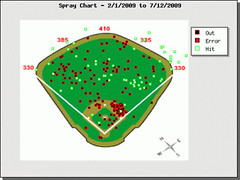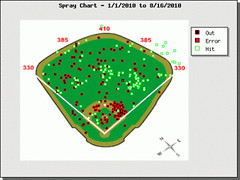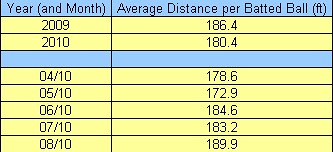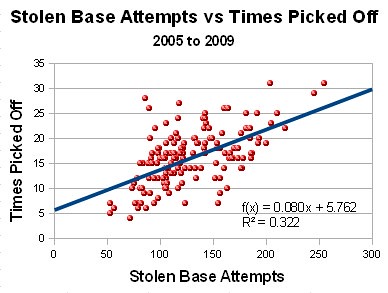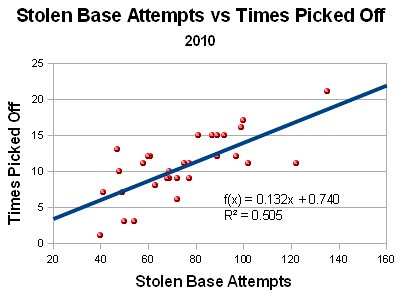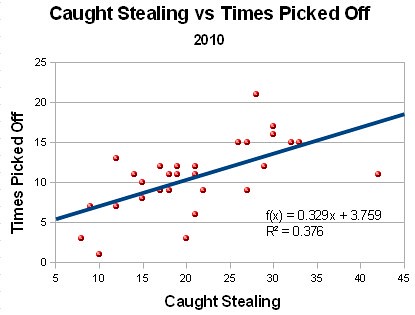Are Umpires Expanding the Strike Zone as the Season Goes On?
David Ortiz of the Boston Red Sox recently complained that the strike zone has been expanding as the season has gone on. He stated that the zone is growing in order to speed up the games. I decided to have a look to see if there was validity to this statement
I examined the area of the strike zone where about 50% of the time a pitch taken is called a strike and the other 50% of the time it is called a ball. This zone is just smaller than the rule book strike zone. Here is the percentage of called strikes strikes compared to the sum of called strikes and balls for each month and year:
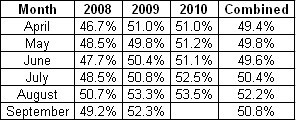
Note: Combined September data should be taken with a grain of salt because none is available from 2010 and this year more pitches generally are being called strikes.
As a rule, the number of pitches called strikes in this zone increase by ~ 2.5% from the beginning of the season to the end. The called balls and strikes thrown into this zone account for only 12.4% of all pitches throw over the time frame. This works out to 0.3% of all pitches during a game — or, in a 300-pitch game, one extra pitch that is called a strike versus a ball. Not that much difference.
To further show the difference, here are the called strike zones of all umpires from 2008 to 2010 for right-handed batters in the months of April and August.
Note: The numbers indicate the decimal format of the percentage of pitches that are called strikes. The circle means nothing, it is just used for visual reference.
April

August
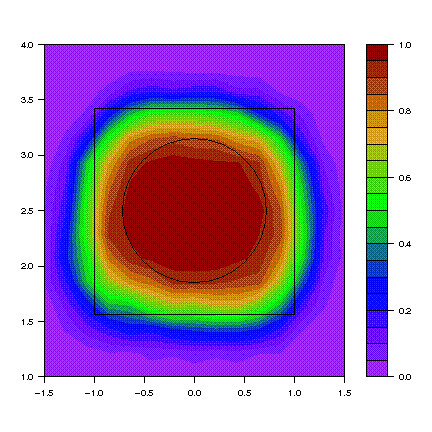
The zone extends a bit on the right and left parts of the plate, but not that much. There seems to be some increasing of the zone over the season, but it is not that much for teams or players to worry about.
